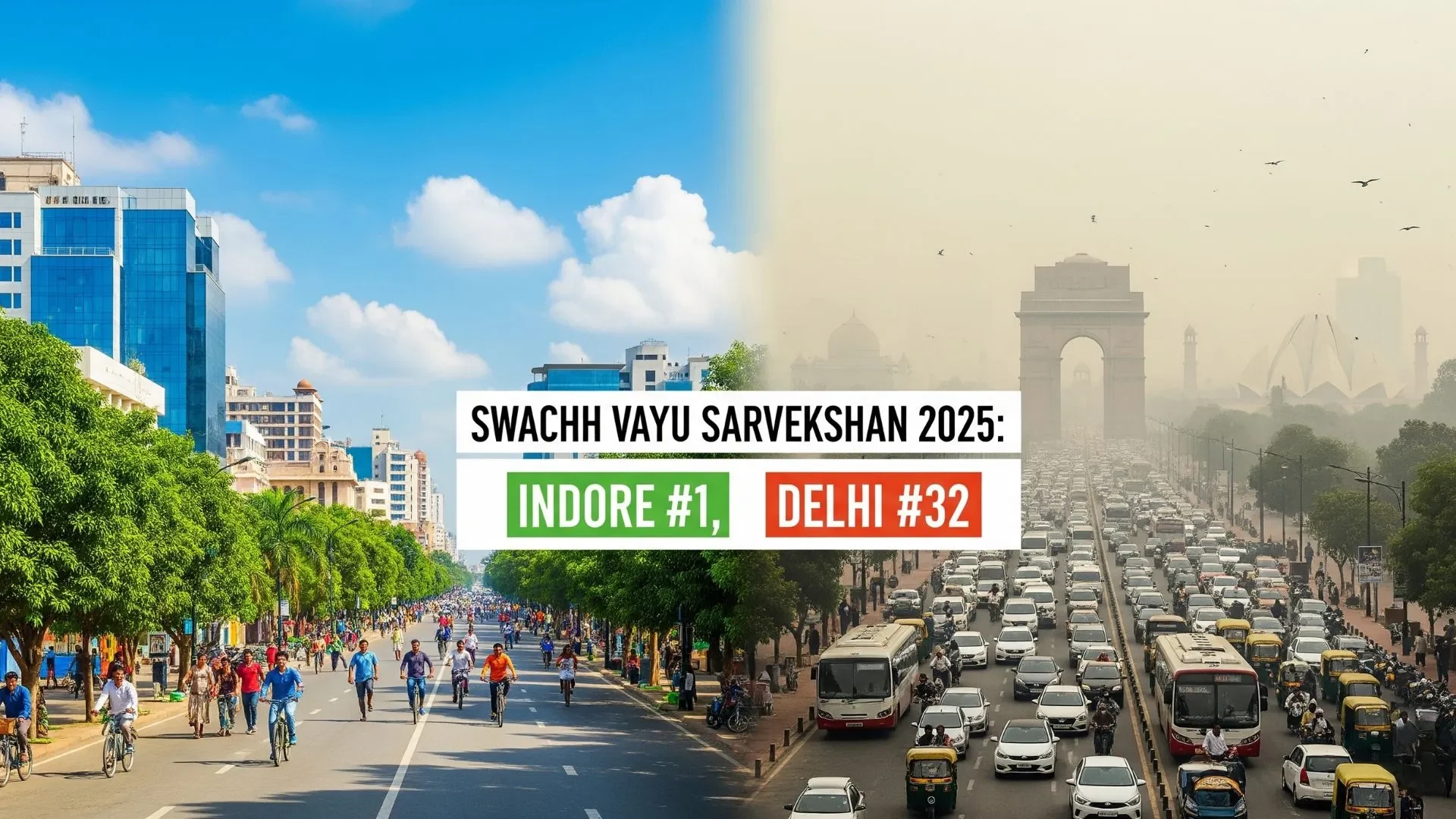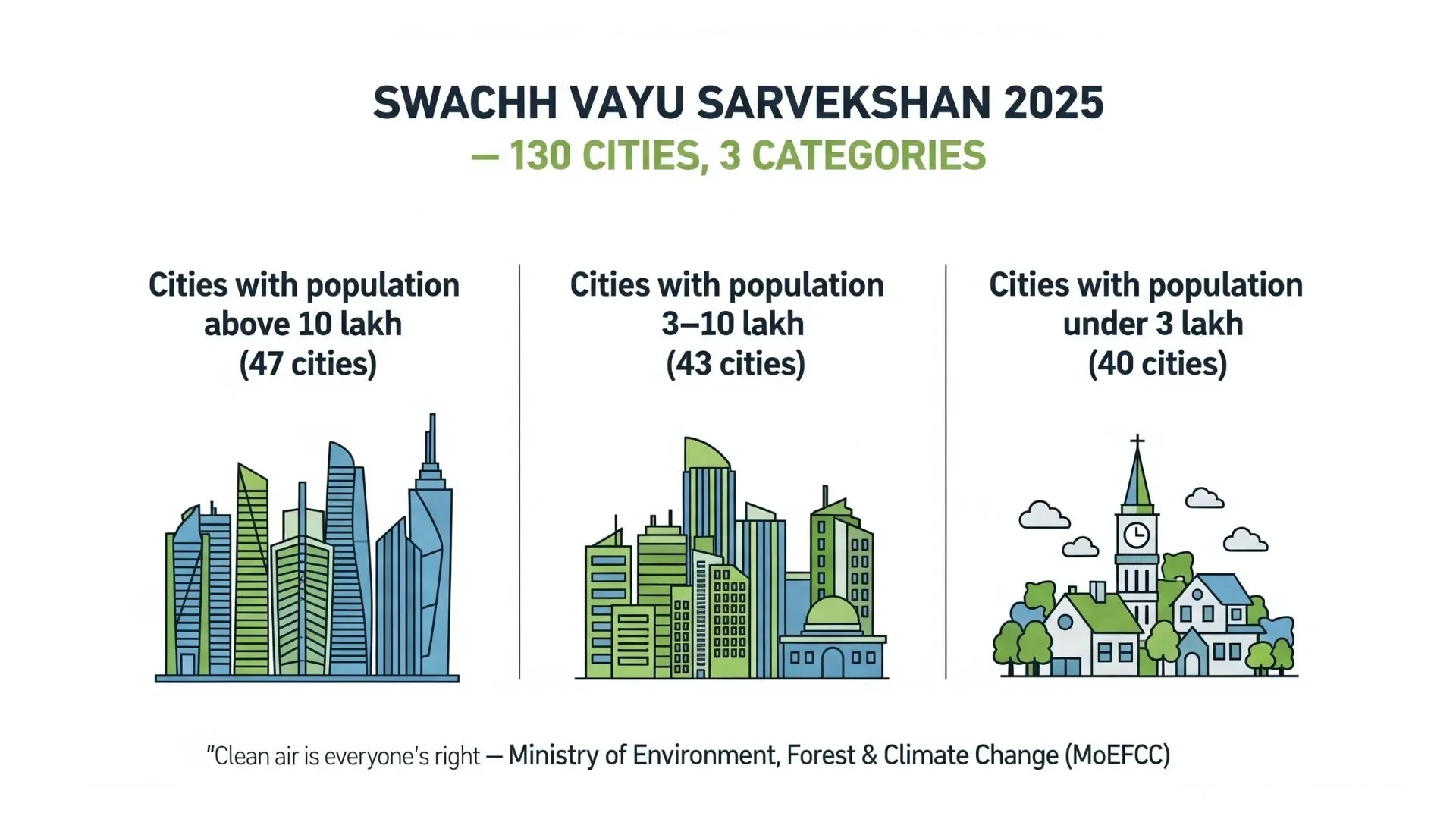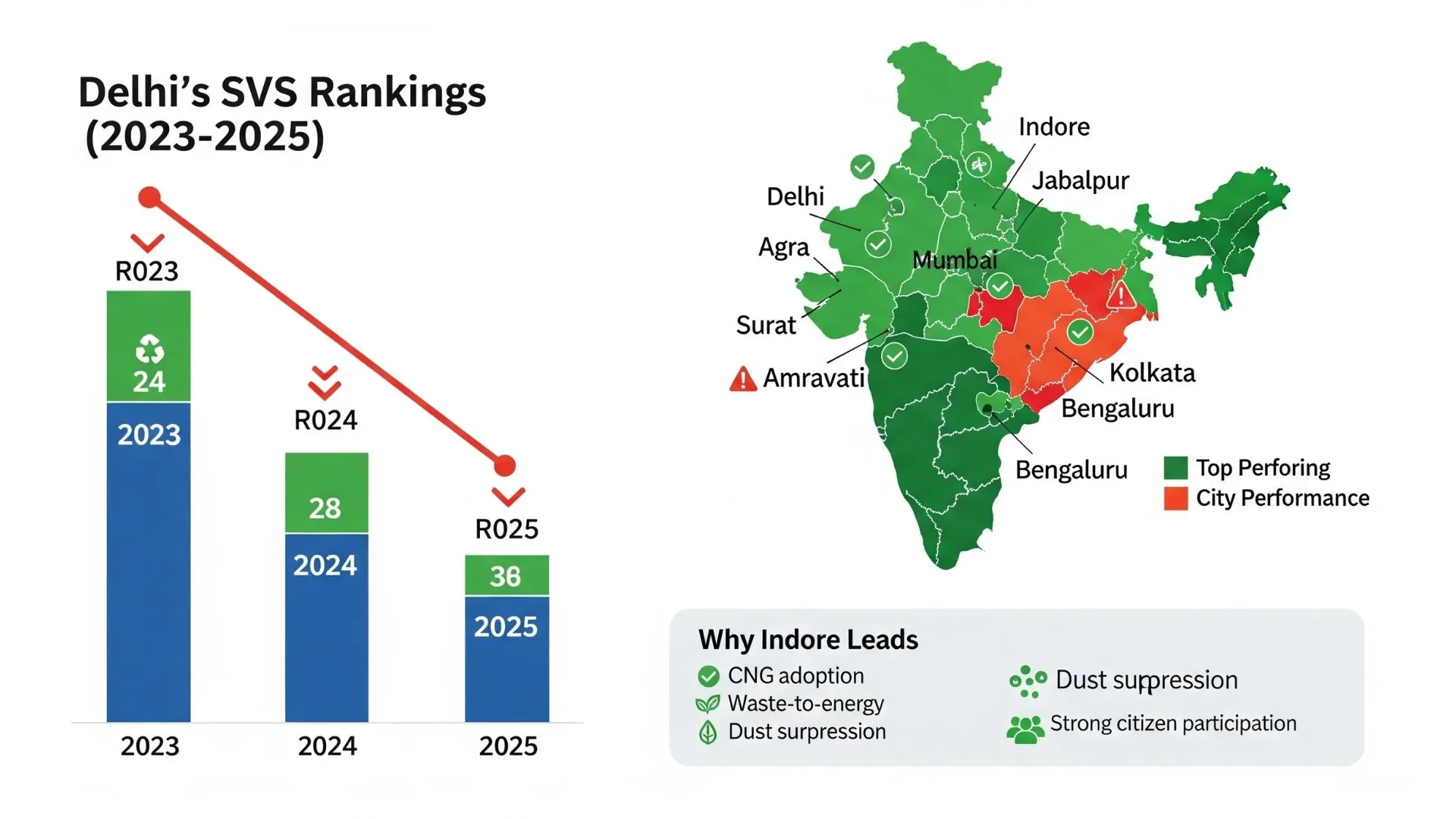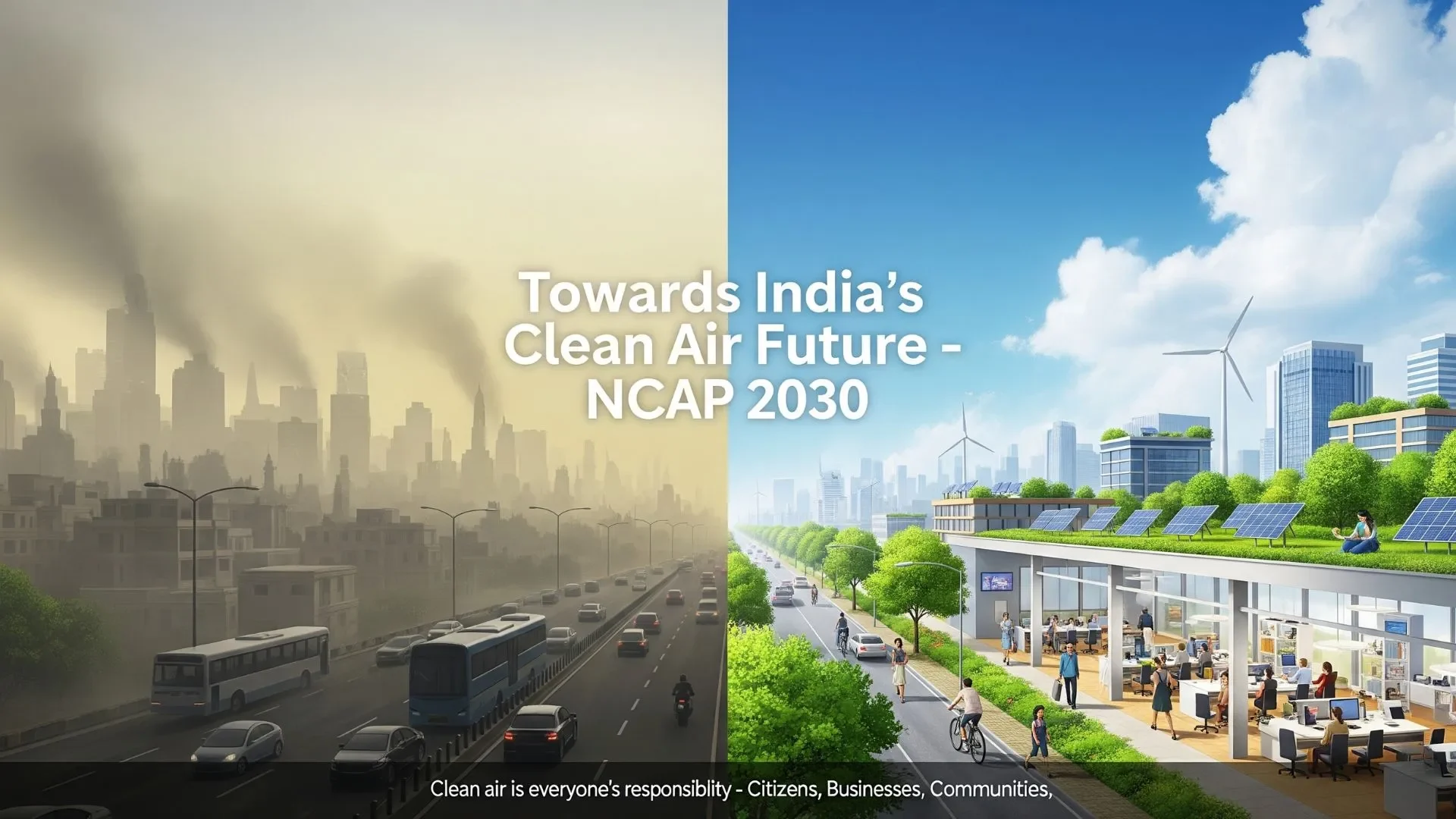
Indore, India’s cleanest city, has added another feather to its cap by securing the top position in Swachh Vayu Sarvekshan (Clean Air Survey) 2025 for cities with populations over 10 lakh. The rankings, announced under the National Clean Air Programme (NCAP), recognize cities for their efforts in implementing air pollution mitigation measures on the ground.
While Indore’s success reflects the impact of sustained governance and citizen participation, the performance of Delhi (ranked 32nd) and several other metro cities underscores the challenges India still faces in addressing urban air pollution.
The Swachh Vayu Sarvekshan (SVS) is a Government of India initiative that evaluates 130 cities across three population categories:
Unlike conventional pollution indices, SVS emphasizes implementation of clean air action plans, assessing measures such as:


The survey shows that India is making gradual progress in its clean air mission:
This indicates that while challenges persist in large metros, smaller and mid-sized cities are successfully leveraging NCAP to improve air quality.

Air pollution remains one of the biggest urban health risks in India. Elevated levels of PM10 and PM2.5 contribute to respiratory illnesses, cardiovascular diseases, and reduced productivity. For businesses and workplaces, this translates into increased absenteeism, higher healthcare costs, and reduced employee well-being.
The Swachh Vayu Sarvekshan 2025 reinforces that:
At Caleedo, we believe that cleaner air and sustainable workplaces go hand in hand. The lessons from Swachh Vayu Sarvekshan 2025 extend beyond city planning—they underline the importance of continuous monitoring, technology-driven solutions, and behavioral change in achieving long-term air quality goals.
As businesses and institutions adapt to sustainability goals, integrating air quality monitoring, smart facility management, and awareness initiatives becomes essential—not just to comply with regulations, but to create workplaces that are healthier, more productive, and future-ready.
The results of Swachh Vayu Sarvekshan 2025 are both encouraging and cautionary. While Indore sets a benchmark for clean air leadership, the struggles of Delhi and other metros highlight the urgent need for collaborative, multi-sectoral action.
For India to achieve its clean air vision, cities, businesses, and citizens must work together to ensure that air quality improvements translate into healthier lives and sustainable urban growth.
Platform
Resources
Company
Solutions
Industry
Function
Contact us
Feel free to contact us !
Copyright © 2024-2025 Caleedo | Powered By PAS Digital